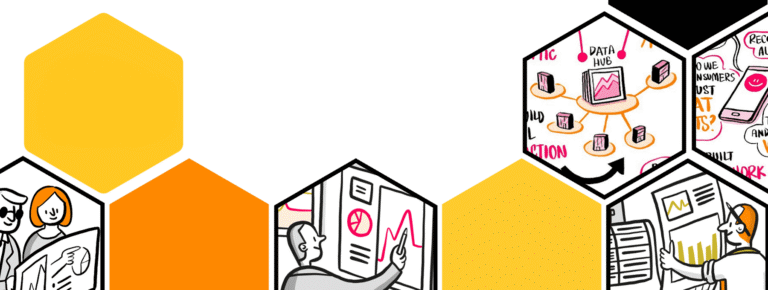Ecommerce Personalization is one of the most powerful tools there is to increase conversions and drive sales. If you’re not using it yet, you’re almost certainly leaving money on the table. Research by Accenture shows that in 2020, businesses lost $756 billion due to lack of trust and poor personalization.
Personalization should be an integral part of your ecommerce strategy. When used efficiently, it will transform customer interactions and create a seamless and consistent experience that feels relevant and enjoyable. If done right, it will lead to more conversions, higher order values, returning customers, and overall improved trust in your brand.
What is Ecommerce Personalization?
Before we dive into the details of Ecommerce Personalization, let’s define what it is:
Ecommerce personalization is the process of dynamically showing each visitor individualized offers, such as product recommendations or other content, based on their previous behavior, demographics, purchase history, and other personal data.
As online merchants seek to engage shoppers, drive sales, and increase repeat purchases, personalization has proven to be one of the most efficient tools in the marketing toolbox. While it comes in many different forms, it’s always about providing a shopping experience that feels timely and relevant to each individual.
Related reading: Ecommerce Strategy 101 – Choosing a Platform and Real KPI Metrics
Benefits of Ecommerce Personalization
Offering a personalized shopping experience all through the buying cycle does require some work. It takes thoughtfulness and the proper technical tooling to create experiences that wow people from the first touchpoint and through what hopefully becomes a lasting relationship. So is it worth the investment? Just a brief look at stats will give you the answer: a resounding YES.
- Marketers report an average increase in sales by 20% when implementing personalization
- 77% of shoppers have recommended, chosen, or are even willing to pay more for a personalized experience
- 80% of shoppers say they’re more likely to purchase from a company offering a customized experience
And it’s not surprising, is it? Flooded as we all are with marketing messages, it takes something special for us to notice an ad or product. Only the ones that feel spot on and relevant to our specific predicament or need, will entice us to click and potentially buy.
7 Ecommerce Personalization Tactics That Work
If you manage to get personalization right, you can expect giant leaps in revenue. Gartner predicts a minimum 15% profit boost for those who succeed with personalization in ecommerce, and there really is no ceiling for how far it can take you. Just as the number of different personalization tactics at your disposal are almost unlimited.
To find out what personalization tactics work best for your audience, you need to combine creativity, empathy, and the right technology with continuous testing and experimentation. Below we’ve listed 7 examples of ecommerce personalization tactics that have a proven record of driving sales.
Personalized Products Recommendations
When you’re browsing an online store, you will often receive suggestions on other products you might be interested in. Those are personalized product recommendations based on your browsing or purchasing behavior. This is a powerful personalization tactic, and it can be done in different ways, such as:
- Visitors who viewed this also viewed…
- Visitors who bought this also bought…
- Handpicked for you…
- These items are trending now…
Choosing the best way depends on the context, but it’s definitely worth doing because it works. Research by Smart Insights shows personalized product recommendations can generate 68% of total ecommerce revenue. Not bad, right?
Weather-Sensitive Personalization
This is a fun and efficient approach to ensure visitors see items that feel most relevant to them. Because think about it – when are you most in the mood for shopping for chunky sweaters and rubber boots? When the sun is shining, or when it’s raining cats and dogs? By showing visitors clothing that matches the weather, fashion retailers can increase conversions. And it seems to work quite well. When Indow Windows implemented this personalization tactic, it resulted in increased click-through and conversion rates as well as a 40% decrease in cost per lead.
Personalized Emails Based on User Behavior
Sending personalized follow-up emails and newsletters to offer discounts on items browsers have shown interest is an efficient way to increase conversion. Introducing urgency with time-bound offers can be a great way to bump up your sales numbers immediately.
Personalized Geo-Location Targeting
Redirecting visitors to the right store depending on where they are located efficiently reduces the number of clicks and improves the customer experience. Segmentation based on location can also help you further personalize the experience by showing relevant offers to each group of customers.
Personalized Upsell Pitch at the End of the Purchase
One opportunity to create personalized offers is during the checkout process. Doing so is usually highly efficient, as the visitor has already begun a purchase and is evidently in “buying mode.” Recommending relevant products when people are about to fulfill their purchase is a powerful strategy. It works exceptionally well if you’re offering products complementing the one your visitor is about to buy.
Target Abandoning Visitors With Personalized Offers
Cart abandonment is a challenge in online sales, and personalization is one way to tackle it. By offering visitors at risk of abandoning the carts a personalized offer, you can often entice them to go back and fulfill their order; or at least sign up for your newsletter or some other valuable micro-conversion.
Compile Lists of Recently Viewed Items
You know how it is when you’re browsing a website; you’re not always in the mood to buy something. Sometimes you just click around, have a closer look at some of the items you like, and then you move on. Reminding your visitors of the things they wanted next time they visit your shop increases your chances of catching them when they’re in the mood to purchase and making sure they don’t forget about your products.
Best Practices for Ecommerce Personalization
Ecommerce personalization involves many moving parts and requires brands to collect, analyze, and activate big data in real-time. This is only possible with the proper tooling and architecture and when the necessary technological components are in place. These components include, but are not limited to:
- Unified and accessible data
- An open architecture
- Automated decision logic and machine-learning
Related reading: AI in eCommerce – It’s Everywhere
Unified and Accessible Data
Information from all touchpoints along the buying journey must be available and shared. Therefore, it’s essential to unify, streamline and integrate your marketing and ecommerce tech stack as much as possible. If not, you risk having critical data getting stuck in silos and breaking the flow of information. This can destroy the seamless and personalized experience you wish to create and ruin the customer experience.
An Open Architecture
Integrating your marketing technology, CRM, and ecommerce platform is crucial. To be agile and able to create personalized experiences quickly, you need a high level of flexibility with as little engineering time as possible. Choosing the right tools and a user-friendly setup can generate significant value by accelerating the rate of deployment.
Automated Decision Logic and Machine-Learning
Automating analysis and delivery is necessary to increase efficiency and scale operations. As the number of variations and segments increases along the experimentation roadmap, assessing the impact becomes a very data-heavy task that can only be scaled with machine learning.
Related reading: Selecting an Enterprise Ecommerce Hosting Platform
Key Takeaways
People have come to want and expect a personalized brand experience, and brands who don’t offer that will miss out on sales. Numerous tactics can be used to increase conversions, sales, and the average lifetime value of your customers. Which ones are best suited to your ecommerce business depends on several factors, and the best way to find out is often through experimentation. To do that, you need a solid, technical foundation where data is unified and accessible, and the architecture of your tech is open and integrated, so you can implement automated decision logic and machine-learning at scale.
How Vaimo Can Help
At Vaimo, we’re experts in digital commerce. We work with brands, retailers, and manufacturers all over the world to create winning customer experiences. We’d love to help you implement a more personalized approach to take your online sales to the next level. Get in touch with our team of experts to learn how we can help you optimize your ecommerce business and help you stand out from your competitors.






